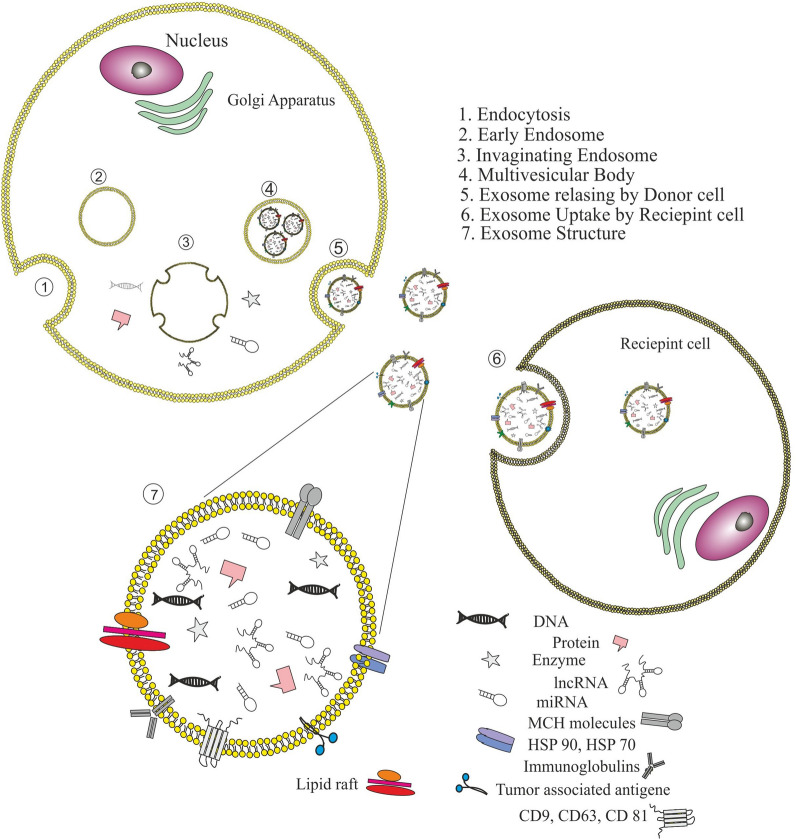Fig. 1.
a Exosomes are cup/spherical-shaped vesicles (40–150 nm) with a double-layered lipid membrane surrounding a small cytosol without any organelles. This phospholipid bilayer membrane loaded with peripheral and integral proteins. Exosomes also contain nucleic acids (e.g. DNA, mRNAs, microRNAs, and long non-coding RNAs) and lipids. b Exosome biogenesis started via endocytosis pathway and early endosome formation. During this process, the cell membrane components (proteins and etc.) are embedded into the early endosomes’ membrane, which then matured into late endosomes. Inward budding of late endosomal membrane creates multiple intraluminal vesicles (ILVs) within multivesicular endosomes, in which some particular proteins and other cytosolic constituents are enveloped in exosomes under control of ESCRT family. MVBs then fuse with the cell membrane to release their ILVs into extracellular milieu by Rab GTPases 27A and B molecular motors

